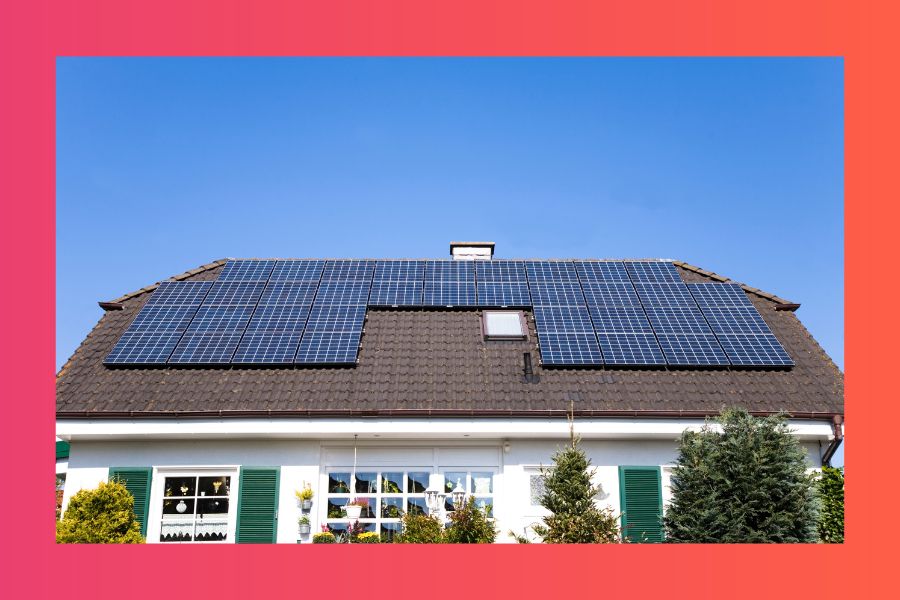Can I Self-Service My Own Rooftop Solar System?
There’s no doubt getting a rooftop solar system is a memorable moment in any household’s story. It’s of course wise that time is taken by any...
3 min read
![]() Solar Trust Centre Team
:
Jan 19, 2023 7:27:28 PM
Solar Trust Centre Team
:
Jan 19, 2023 7:27:28 PM
.jpg)
Whether it’s building new ones or renovating existing ones, having eco-friendly homes are very important to our future. Going forward, more eco-friendly residences will increase the comfort of those who reside in them, and it will help decrease global warming. This is because homes can ultimately expend a lot of energy, and there are indeed a whole lot of homes on the planet! In Australia alone it’s held there are 10.8 million dwellings. So, while a coal mine is indeed going to do more environmental harm than a single home - and unlike homes, coal mines really do need to become a thing of the past pronto! - it’s also the case that if there are many millions of home across the nation that don’t operate in a clean and green way, that’s ultimately going to deliver a really sizeable chunk of emissions into the atmosphere each year, alongside other sources of pollution.
When it comes to making homes eco-friendly, there are some quick and easy steps available, and then there are much bigger undertakings. The environmental challenge posed by dark roofs is essentially in the middle. They’re a real problem, but also one where effective solutions can be pursued. So, let’s detail now the issue dark roofs present, and what remedies are available.
Any discussion of why dark roofs aren’t great could get very technical without need. The issue can be explained via a simple, but effective analogy. Remember when you were a kid and your parents said ‘Don’t wear a dark shirt on a hot day?’ It’s this principle writ large - dark materials absorb heat, whereas light materials reflect it. This is why dark roofs represent a pain point in countries with hot climates like Australia. And unlike a t-shirt that will cover just one person, a roof covers a whole home! This of course means all living under it will have to either swelter under comparatively higher heat levels, or need to blast the AC round the clock in summer - which of course isn’t great for the environment, and increases the electricity bill!
.jpg?width=900&height=600&name=STC%20-%20Featured%20and%20Content%20Images%20(5).jpg)
First, there is the aesthetic factor. Dark roofs are often perceived to be easier to keep looking pristine in comparison to other colours. This isn’t the case though. Ultimately, any roof has to be cleaned regularly in order to keep it looking good, and in terms of the colour wheel contrast, black contrasts the strongest with white. And, what colour are bird droppings? White! So, even if prized for their appearance alone, dark roofs aren’t necessarily easier to maintain.
Second, there’s the perceived reflectivity issue. Some councils have had regulations in place which ban lighter-coloured roofs due to apparent concerns about reflectivity. [1]Of course, someone having an actual array of reflective mirrors on their roof wouldn’t suit, but neither would someone building a gigantic wall for a front fence - sensible regulations (and penalties) exist for anyone who would build such a fence in defiance of council rules. Unfortunately, common sense has been missing for a long while in numerous places when it comes to roof regulations surrounding reflectivity. Lighter-coloured roofs can exist without causing such a problem, and there’s no doubt darker roofs can represent a much bigger problem overall - with some estimates holding a darker roof can make a property 10 degrees°C hotter than a comparable one with a lighter roof!
While it’s indeed the case some councils have implemented some unfortunate regulations around roofing - and also subsequently failed to rectify them in a timely manner - there have been some encouraging advances in this area in recent times. The Town of Bassendean (a city council in Perth) has put into place a sustainable development policy which not only bans the installation of dark roofs on new homes, but also mandates that a rooftop solar system, grey water system, and rainwater tank be installed on a new property. Furthermore, a new build must also leave provision for the installation of an EV charger in future. [2]This is clearly brilliant, and lights a path for other governments to follow.
At the state level, the NSW government was set to move to ban dark roofs on new builds in 2021, before abandoning the plan in 2022. This is frustrating, but hopefully history will show it to be a ‘false start’, and NSW alongside other governments will soon move to ban dark roofs.
Ideally, more governments - be it local, state and territory, or even national - would put more time and resources behind a push to end dark roofs being built on new homes. But if an existing home has a dark roof and an owner who wishes to alleviate the problem? There are avenues available: it is possible to replace a roof. What’s more, whether the roof is ultimately replaced or not, there are certainly other ways to make the home smarter and more eco-friendly.
And ultimately, when it comes to any discussion surrounding making a roof and home more eco-friendly, there’s really no better step that can be taken than looking to get a rooftop solar system. A rooftop solar system can drive down the price of electricity bills today, help provide a defence against any price rises in future, and also offer the home a source of clean and green eco-friendly energy!
-1.jpg)
There’s no doubt getting a rooftop solar system is a memorable moment in any household’s story. It’s of course wise that time is taken by any...

Rooftop solar systems are brilliant pieces of clean and green technology that can bring many benefits to a home. For many new solar system owners,...